5 Bedding Upgrades You Should Make If You’re Over 60, According to Experts
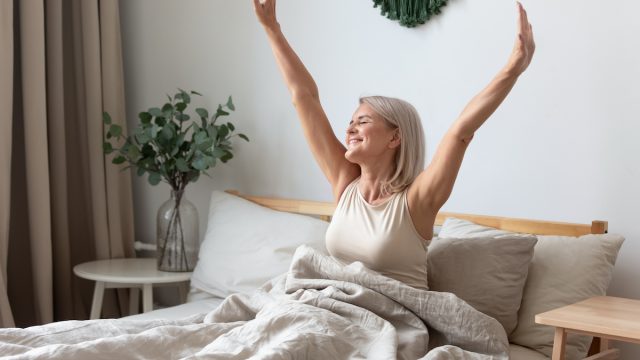
There are a few things that get more difficult as you age—and sleep is one of them. Gone are the days you could slide into bed and expect to snooze straight through to the next morning. These days, you’re more likely to experience fragmented sleep and perhaps even wake up earlier (whether that’s something you want to do or not). But it’s not all downhill from here. If you invest in the proper sleep setup, you can minimize disturbances for a solid slumber. That’s why we asked sleep experts for their insights into the bedding upgrades to make after 60. Read on for sweet dreams.
READ THIS NEXT: If You’re Over 50, Sleeping in This Position Is Aging You, Experts Warn.
1
Start with your mattress.
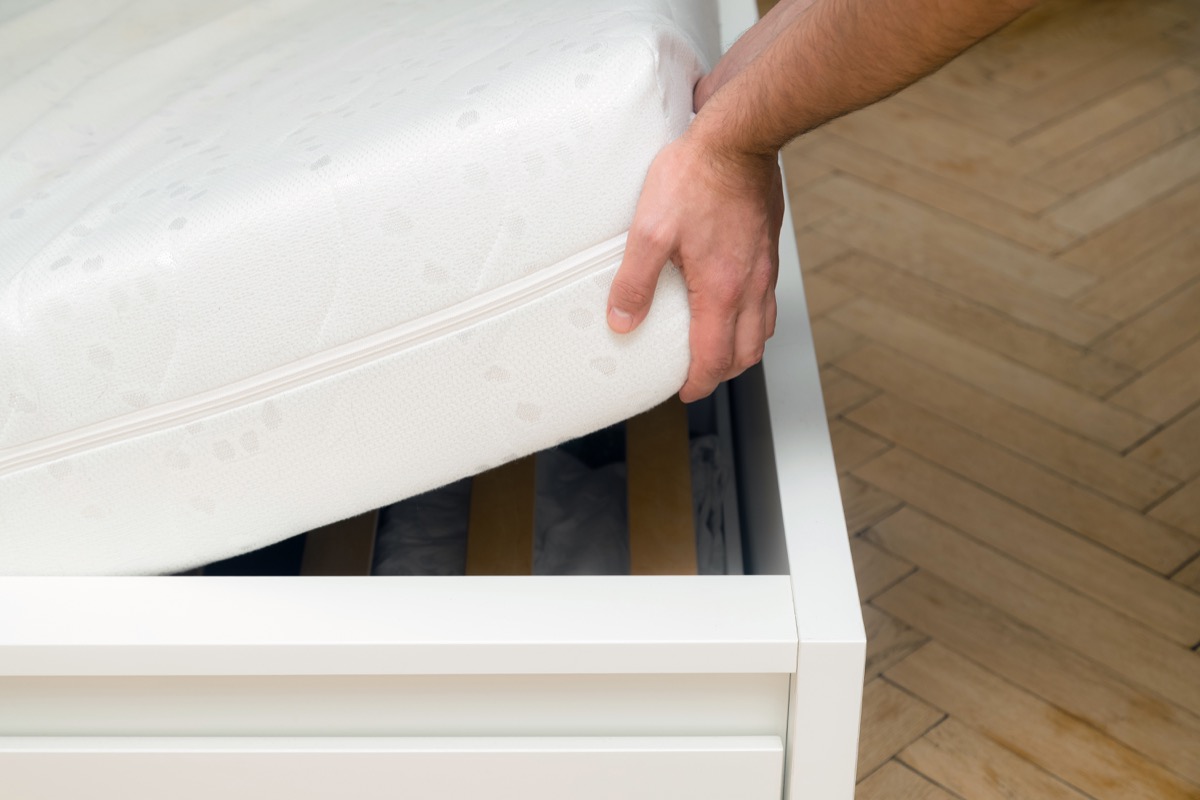
The most important piece of any bedding setup is the mattress, and that’s especially true in your 60s.
“As people age, their bodies go through changes that can affect their sleep quality,” says Rosie Osmun, certified sleep coach from Amerisleep. “For example, older individuals may have more difficulty finding a comfortable position to sleep in, or they may have chronic pain or other medical conditions that can disrupt sleep.” Because of that, you’ll want to invest in a mattress that is supportive and comfortable.
Most of the experts we polled suggest choosing a firm option. “I say that firmer is better than softer,” says Philip Lindeman, MD, PhD, physician and sleep expert with GhostBed. “Higher-end foam-based mattresses are also better. These help support the spine at ages where spinal support becomes more relevant as disks between vertebrae start to degrade.” You’ll want to test your mattress in person to ensure it’s to your liking.
2
Or try a mattress topper.
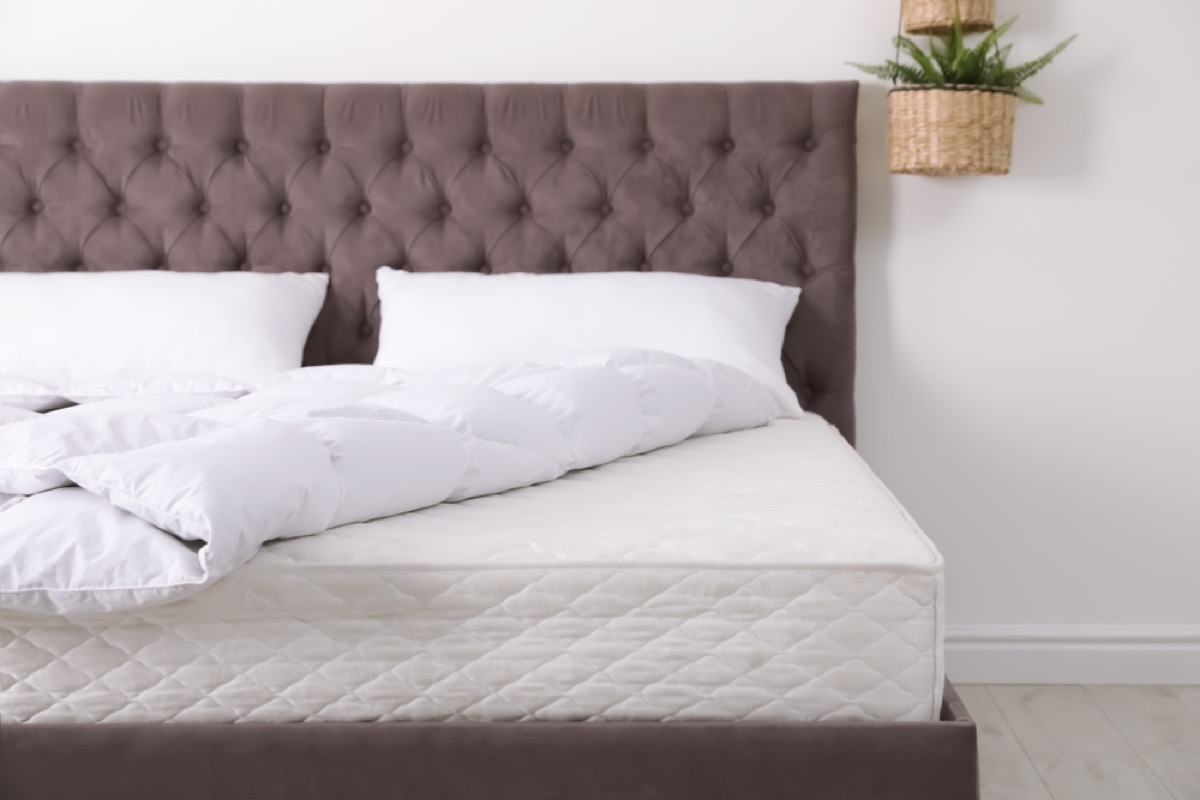
Sometimes, a new mattress just isn’t in the cards. In that case, a mattress topper can provide added support and a touch of plushness.
“As we age, and regardless of weight, we lose subcutaneous fat and muscle—meaning that we will have less of our own ‘padding’ to keep us comfortable while sleeping—significantly impacting sleep quality,” says Terry Cralle, a registered nurse and certified clinical sleep educator with the Better Sleep Council. “Increased pressure on arms, shoulders, hips, and legs can lead to tossing and turning, frequent awakenings, and diminished sleep quality.” A topper can mitigate all that.
So, which to choose? Nicole Eichelberger, a Board of Behavioral Sleep Medicine-certified sleep expert with Mattressive, suggests a high-density foam topper that conforms to the shape of your body. Again, go test it at the store.
READ THIS NEXT: 7 Costly Mistakes You’re Making When Buying a Mattress, Experts Say.
3
Curb hot flashes like this.
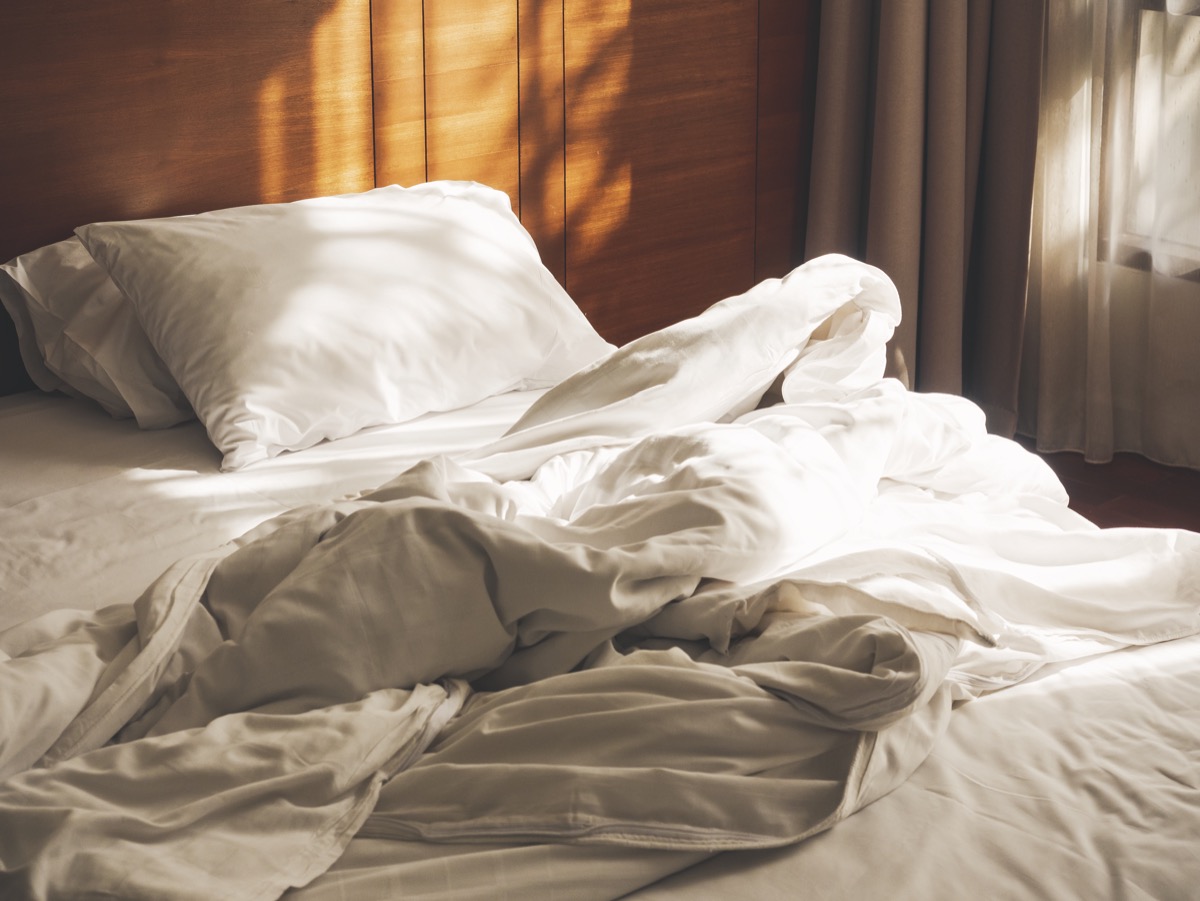
Hot flashes can wreak havoc on your sleep schedule. Fortunately, there are bedding solutions you can implement to ease them.
“Those struggling with hot flashes or night sweats should consider bedding made of breathable materials such as cotton or linen, which allow for better airflow and can help regulate body temperature,” says Osmun. “Lighter-weight comforters and duvets can also help, as heavy bedding can trap heat and make hot flashes worse.” Pair them with cooling sheets and pillows.
If you need even more coolness, Eichelberger suggests keeping a fan on in the bedroom and stashing extra sheets nearby. “Having a spare set of bedding that you can swap out when you’re feeling overheated can be helpful,” she says.
4
Upgrade those pillows.
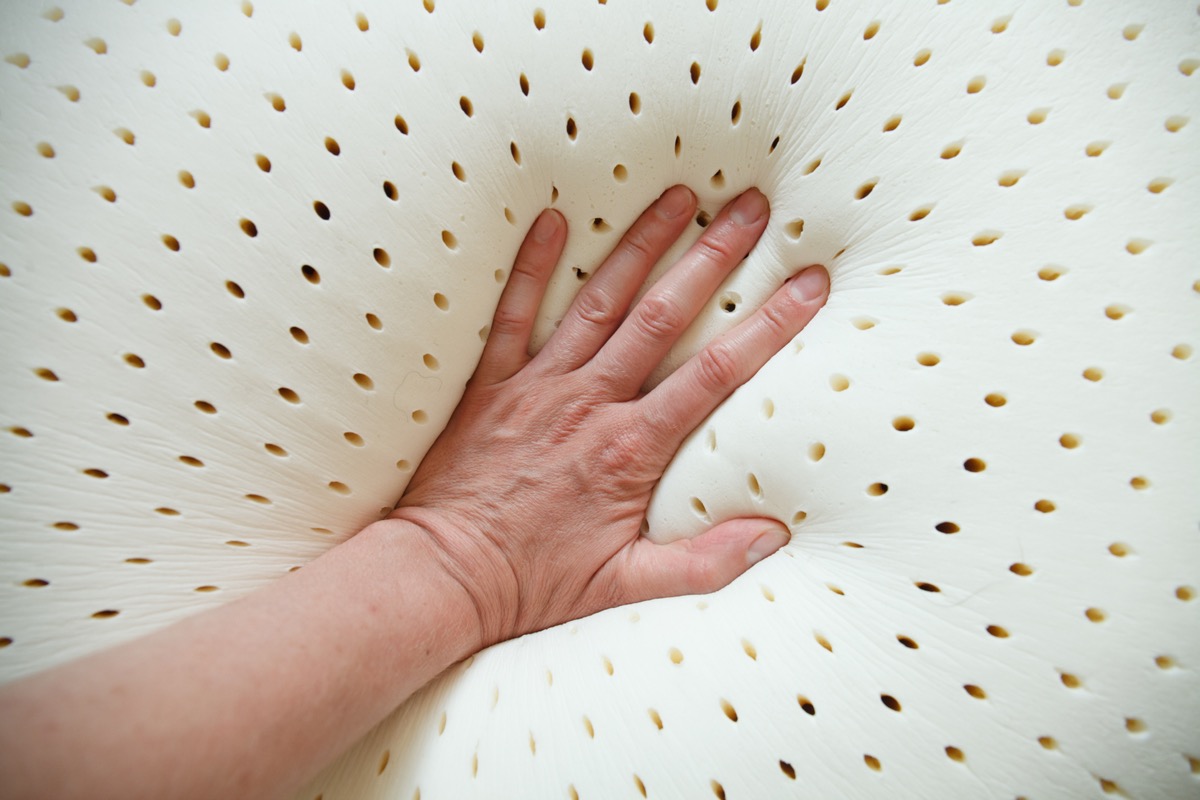
Pillows are key for maintaining proper alignment while you sleep. You’ll want to choose a firm one with good support. An option with an adjustable height can also be helpful.
“A pillow with adjustable height allows you to customize the support it provides to better meet your individual needs,” says Eichelberger. If you sleep on your side, consider a body pillow to place between your legs to keep your spine properly aligned.
For more aging advice delivered straight to your inbox, sign up for our daily newsletter.
5
Accessorize!
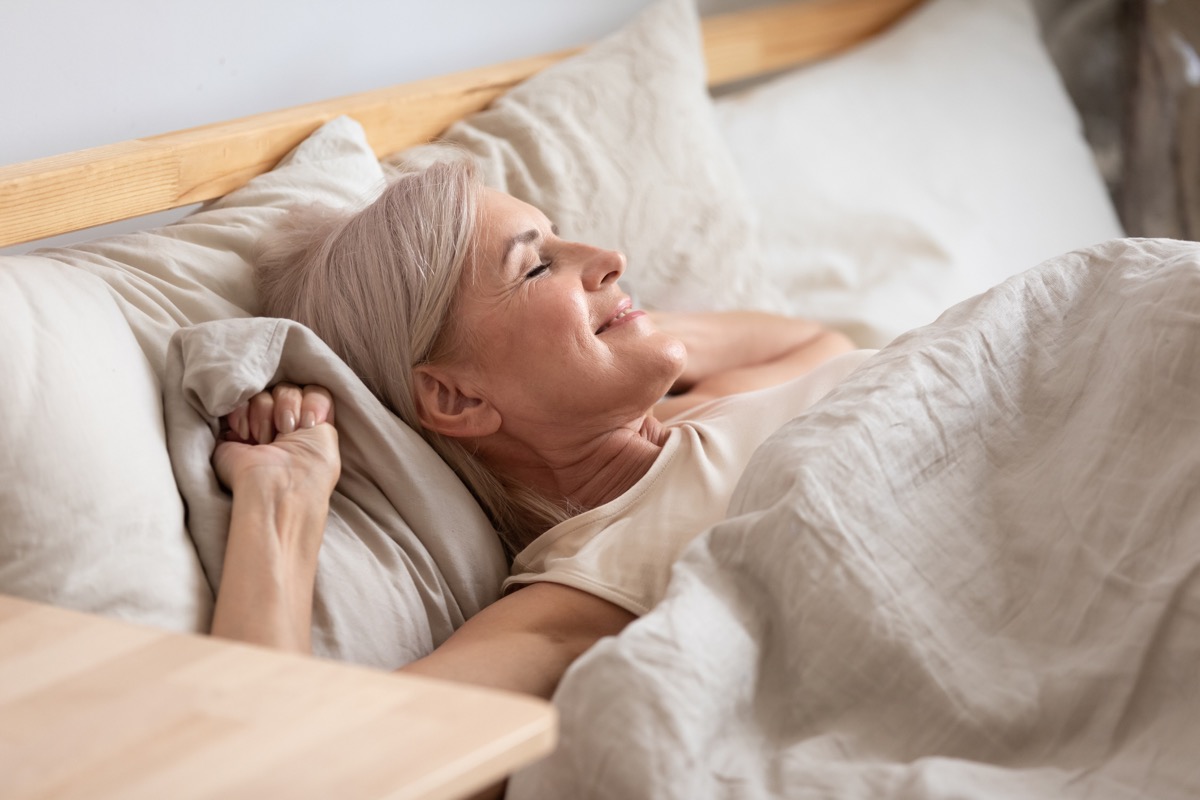
Eichelberger recommends a few sleep accessories to truly elevate your oasis. The first one is a heated mattress pad. “As people get older, they may find that they are more sensitive to cold temperatures,” she says. “A heated mattress pad can help keep you warm and comfortable at night.”
She also suggests a weighted blanket. “Weighted blankets can help provide a sense of comfort and security and may be helpful for people with anxiety or insomnia,” she says. You’ll be asleep—and stay asleep—until your alarm sounds.